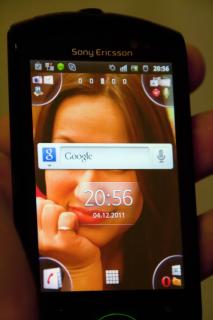 “Chat room pervert jailed for attack on boy”[1]
“Chat room pervert jailed for attack on boy”[1]
“Man accused of seducing young girl on web”[2]
Headlines like these from the news and shows like NBC’s “To Catch a Predator” have made parents understandably anxious about their teen’s Internet use, especially when it comes to social media websites, like Facebook. The Internet can seem like a big city at night—full of hidden dangers and temptations; a place you wouldn’t let your children go to alone.
But is the Internet really such a menace? A report by the Internet Safety Task Force (created by 49 state attorneys general) found that “the problem of bullying among children, both online and offline, poses a far more serious challenge than the sexual solicitation of minors by adults. ”[3] In fact, the report found that “children and teenagers were unlikely to be propositioned by adults online. In the cases that do exist . . . teenagers are typically willing participants and are already at risk because of poor home environments, substance abuse or other problems.”[4]
It may help parents and caregivers to learn that the Web—and digital tools in general—can actually be beneficial for teens. This may be especially true for teens who are otherwise isolated or marginalized. Youth who are lesbian, gay, or bisexual (LGB) often grapple with the social risk of losing family and friends by coming out and the physical risk of being attacked. For LGB youth, the Internet can provide a welcoming community of other young people looking to share their experiences and gain support. Discrimination at schools is sometimes so widespread that recently the ACLU found “some public schools are using web filtering software to block student access to positive information about LGBT issues and organizations” yet allowing web access to anti-LGBT sites or sites with information about changing LGB sexual orientation.[5] With such hostile environments offline, an accepting and supportive online space can be lifesaving.
The Internet also can be helpful to young people who are looking for information about health and sexuality, yet don’t feel like they can ask about these issues at home or in their schools. Websites that answer questions about sex, STDs, and even puberty give reassurance to youth.
And digital tools can be used to promote healthier behavior in teens. For example, the Center for Innovative Public Health Research (CiPHR) has developed a smoking cessation via text message program aimed at young adults, based upon pioneering work by Dr. Anthony Rodgers in New Zealand. CiPHR’s program was piloted in Turkey, using cognitive behavioral therapy-based messages to help adults stop smoking. Over two-thirds of young adults in the United States own a cell phone and use text messages, so this new communication tool is a great way to reach the one in four young adult smokers in the country. Indeed, text messaging is fast becoming the preferred method of communication for this age group. One important advantage of text messaging is that it instantly reaches its audience; they don’t have to go anywhere or take any steps to retrieve the information.[6]
Other tools, such as smartphone applications (apps) can be used to promote healthy behaviors. For example, a new program recently highlighted in a New York Times article allows you to record your daily exercise and diet. Everyone knows that to maintain good health they need to eat less and exercise more, yet few adhere to this simple rule. Having the facts right in front of you, though, may jumpstart real behavioral change. Thomas Goetz, executive editor of Wired and author of Decision Tree: Taking Control of Your Health in the New Area of Personalized Medicine, explains that “. . . the key to long-term changes in health behavior is engaging people emotionally as well as rationally. . . . [Digital tools] offer self-awareness, a way to turn action into change and to do it scientifically, rigorously, methodically. To do it with data.”[7] Digital apps also provide a personal connection by providing instant feedback and encouragement via text message or website.
Let’s not forget the way technology is most widely used today: to help people keep in touch. Social media websites allow young people (and their parents) to stay in contact with friends from all walks of life. Today’s generation is one that can conceivably grow up without ever losing touch with their friends from summer camp!
When we look at the positive ways that technology affects our lives—bringing us closer together, providing easy access to information, and helping us stay healthier—we can see all the ways that the quality of our lives has improved. Most of us cannot imagine life now without the Internet, so don’t be afraid to embrace all the positive things it has to offer and educate young people about ways to use technology responsibly.
Acknowledgments: Thank you to Amina Sharma for her contributions to this blog.
References:
[1] Hunt, K., “Chatroom pervert jailed for attack on boy” KentOnline. 2011 http://www.kentonline.co.uk/kentonline/news/2011/january/7/chatroom_pervert_jailed.aspx
[2] Marsh, V., “Man seduces young girl on web” News Mail. 2011 http://www.news-mail.com.au/story/2011/02/28/man-seduces-girl-on-internet-bundaberg-jail/
[3] Stone, B., “Report Finds Online Threats to Children Overblown” New York Times. 2009 http://www.nytimes.com/2009/01/14/technology/internet/14cyberweb.html?scp=1&sq=internet%20safety&st=Search.
[4] Ibid.
[5] “Don’t Filter Me!” American Civil Liberties Union, LGBT Rights, Youth and Schools, https://www.aclu.org/lgbt-rights/aclu-launches-don-t-filter-me-initiative-stop-unconstitutional-web-filtering-lgbt-conten
[6] Smoking Cessation via Text Messaging in the U.S., http://dev.innovativepublichealth.org/projects/sms-usa/.
[7] “Technology Can Improve Health Care,” New York Times, March 27, 2010. http://bits.blogs.nytimes.com/2010/03/27/technology-can-improve-healthcare/?scp=8&sq=health&st=Search.
